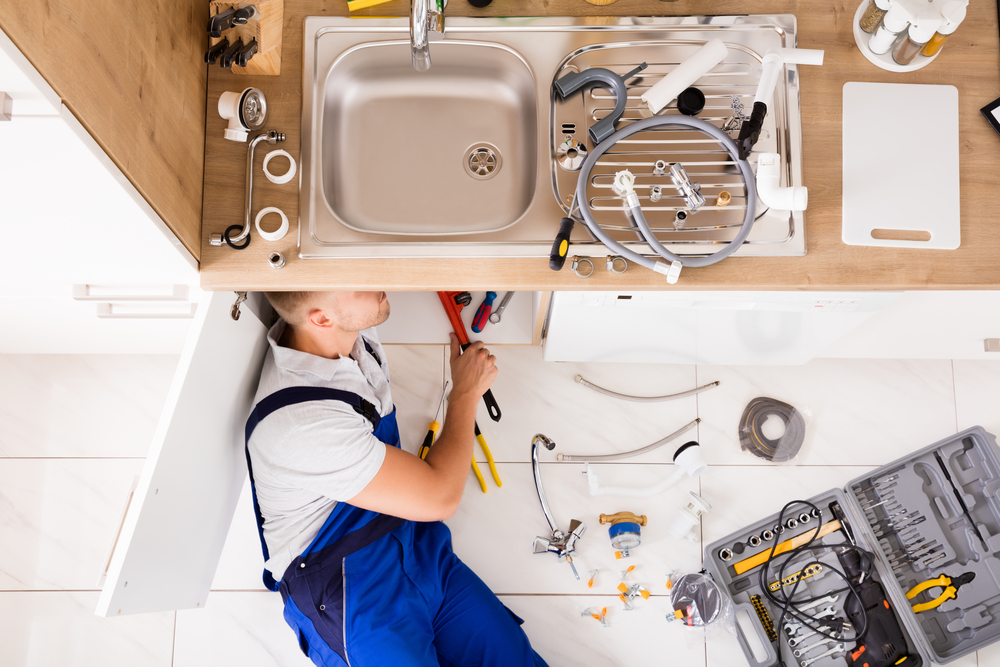A leaky faucet can be more than just an annoying drip. It can lead to higher water bills and even cause water damage over time. Fixing a leaky faucet can save you money and give you the satisfaction of tackling a home repair project. Plus, most faucet repairs are more straightforward than you might think.
With these tools and a little patience, you can quickly fix most faucet leaks without professional help. However, there are instances when the issue is more complex and requires a plumber’s expertise to ensure your sink and faucet are in top shape.
Identifying the Source of the Leak
Before you can fix a leaky faucet, you need to identify where the leak is coming from. Start by turning off the faucet’s water supply. There are usually valves under the sink that you can turn to stop the water flow. Once the water is off, wipe down the faucet and surrounding area to make it easier to see where moisture might reappear.
Pay attention to the different parts of the faucet. Water can leak from the base, the spout, or the handles. Turn the faucet handles to the “on” position to release leftover water in the lines. Watch closely to see if any water continues to drip. If you notice leaks around the handles, the problem might be with the handle components or the seals inside them. If the spout leaks, it could be due to a worn-out washer, O-ring, or valve seat.
Another helpful method is running your finger along the edges and joints of the faucet to feel for any moisture. Sometimes, leaks are hidden and not visible. Identifying the exact source of the leak helps you know which parts to focus on and makes the repair process more straightforward.
Tools and Materials You Will Need
Fixing a leaky faucet is a task you can often handle with the right tools and materials. Before starting, gather all the necessary items to ensure the process goes smoothly.
The essential tools you’ll need include:
1. Adjustable wrench – for loosening and tightening parts.
2. Screwdrivers (both flathead and Phillips) – for removing and securing screws.
3. Pliers (needle-nose and standard) – to grip and manipulate small parts.
4. Plumber’s tape – to make watertight seals on threaded fittings.
5. Replacement parts – such as washers, O-rings, cartridges, or valve seats, depending on the faucet type.
You might also need a penetrating oil like WD-40 to help loosen stubborn nuts and bolts. A cleaning or old toothbrush helps scrub off any mineral build-up or debris from parts. Having a small container or tray to hold screws and small parts can help prevent losing them during the repair process.
Ensure you have a towel or rag handy to wipe up any water spills and keep the area clean. With these tools and materials, you’re well-prepared to fix a leaky faucet.
Step-by-Step Guide to Fixing a Leaky Faucet
Fixing a leaky faucet is straightforward if you follow these steps. Once you’ve identified the source of the leak and gathered your tools, you’re ready to begin.
1. Turn Off the Water Supply: First, ensure the water supply to the faucet is off. Then, turn the faucet handles to release any residual water and pressure.
2. Disassemble the Faucet: Use a screwdriver to remove the handle(s). Expose the valve or cartridge that may need to be replaced. Place all small parts in a container to keep track of them.
3. Inspect and Replace Damaged Parts: Check washers, O-rings, and the valve seat. If they are worn or damaged, replace them. Cleanly brush away any mineral deposits.
4. Reassemble the Faucet: Reassemble the faucet in the reverse order of disassembly. Ensure each component is secured tightly, but be careful not to overtighten and damage the new parts.
5. Turn the Water Supply Back On: Slowly turn the water supply back on and test the faucet by turning it on and off. Ensure there are no more leaks and that the faucet operates smoothly.
Following these steps helps you fix the most common leaks. However, if the leak persists or you encounter any complications, it might be best to seek professional help.
When to Call a Professional for Sink and Faucet Repairs
While many minor leaks and faucet issues can be fixed with essential tools and know-how, sometimes calling a professional is your best option. Here are some situations where it’s wise to seek expert help:
1. Persistent Leaks: If you’ve followed all the steps and the leak continues, a more severe problem might need a plumber’s expertise.
2. Complex Faucet Types: Some modern or luxury faucets have complicated mechanisms that professionals best handle to avoid further damage.
3. Hidden Water Damage: A professional can more thoroughly assess and repair hidden issues if there are signs of water damage beneath the sink or behind walls.
4. Low Water Pressure: Persistently low water pressure can indicate a blockage or a more significant plumbing problem. A plumber can diagnose and fix this efficiently.
5. Installation of New Fixtures: A professional ensures proper installation for newly bought or high-end fixtures, maximizing their lifespan and functionality.
Professional plumbers have specialized tools and experience to handle a wide range of issues efficiently. They can provide long-term solutions and peace of mind, knowing that the job is done correctly.
Conclusion
A well-maintained plumbing system is vital for the comfort and functionality of your home or business. Regular maintenance, timely repairs, and knowing when to call a professional can save you from costly damages. Understanding how to identify leaks, gather the right tools, and follow proper steps ensures you’re prepared for common plumbing issues.
At El Plomero Latino Inc., we specialize in all aspects of plumbing services in Orlando, from detecting water leaks to ensuring efficient faucet and sink repairs. Whether you’re dealing with a persistent leak or need expert installation of new fixtures, we’re here to help. Contact El Plomero Latino Inc. today for reliable and professional plumbing services in Seminole County. Let us handle your plumbing needs so you can focus on enjoying the comfort and reliability of a well-functioning home or business.






















